The instructions for each model describe how to use the sewing device. However, there are basic principles that apply to a number of machines. After all, modern developers use the same operating principle.
- The structure and principle of manual sewing machines
- Instructions for use
- Insert the needle
- Installing the coil
- Threading the thread
- Select mode
- General rules for the operation of hand sewing machines
- What not to do
- Safety precautions at work
- Possible malfunctions and their elimination
- Replacing the presser foot
- Review of modern hand models
The structure and principle of manual sewing machines
How to use a sewing machine depends on its type. All hand-operated models must have:
- platform and base;
- stitch parameter regulator;
- manual drive mechanism;
- winding unit;
- flywheel;
- sleeve part of the body;
- needle plate;
- paw;
- needle driver;
- thread pulling on the panel.
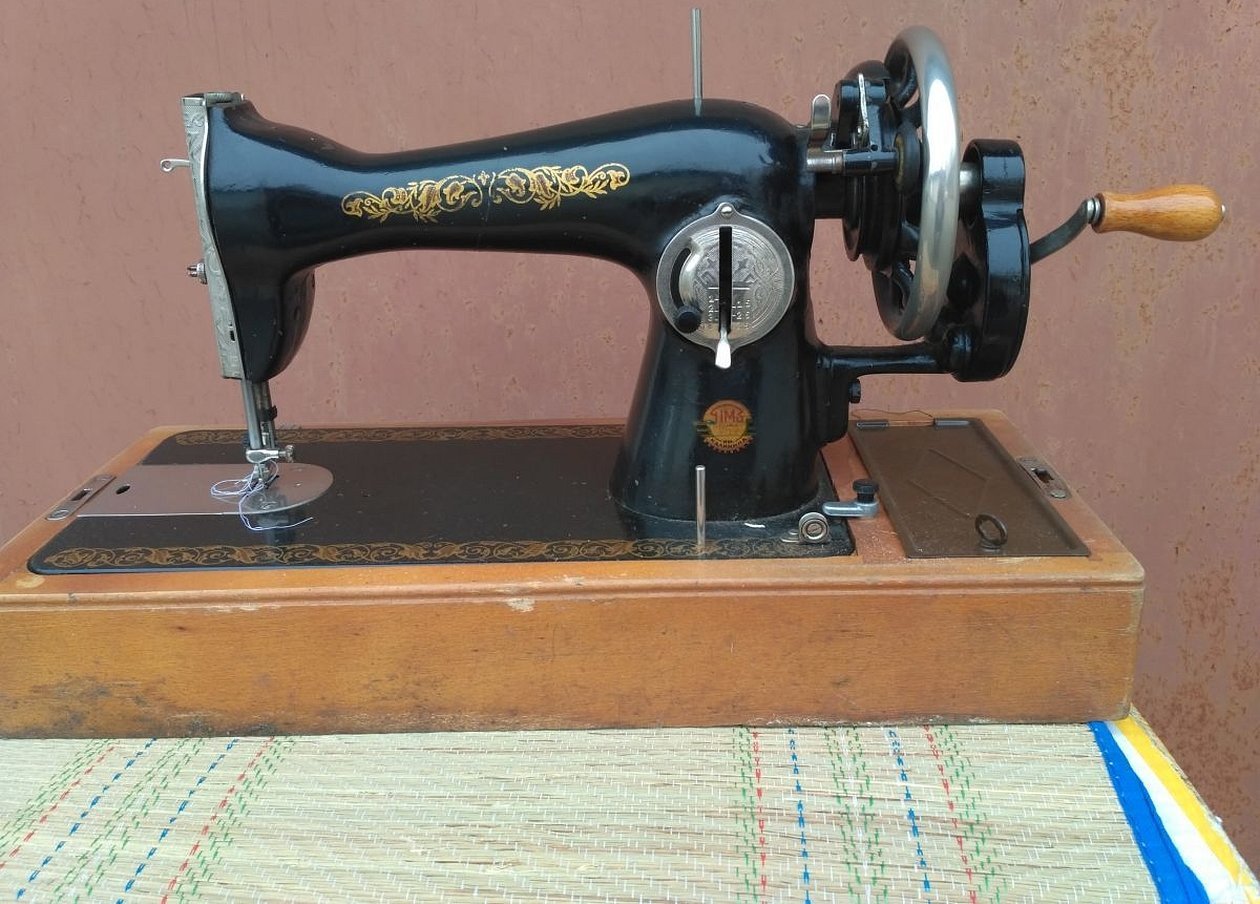
Step-by-step instructions for preparing devices for sewing can also be similar. All household models are easy to operate. However, they can perform complex tasks, sew on dense fabrics.
Important! Among modern machines there are hand-held devices that look like a stapler and fit in your hand.
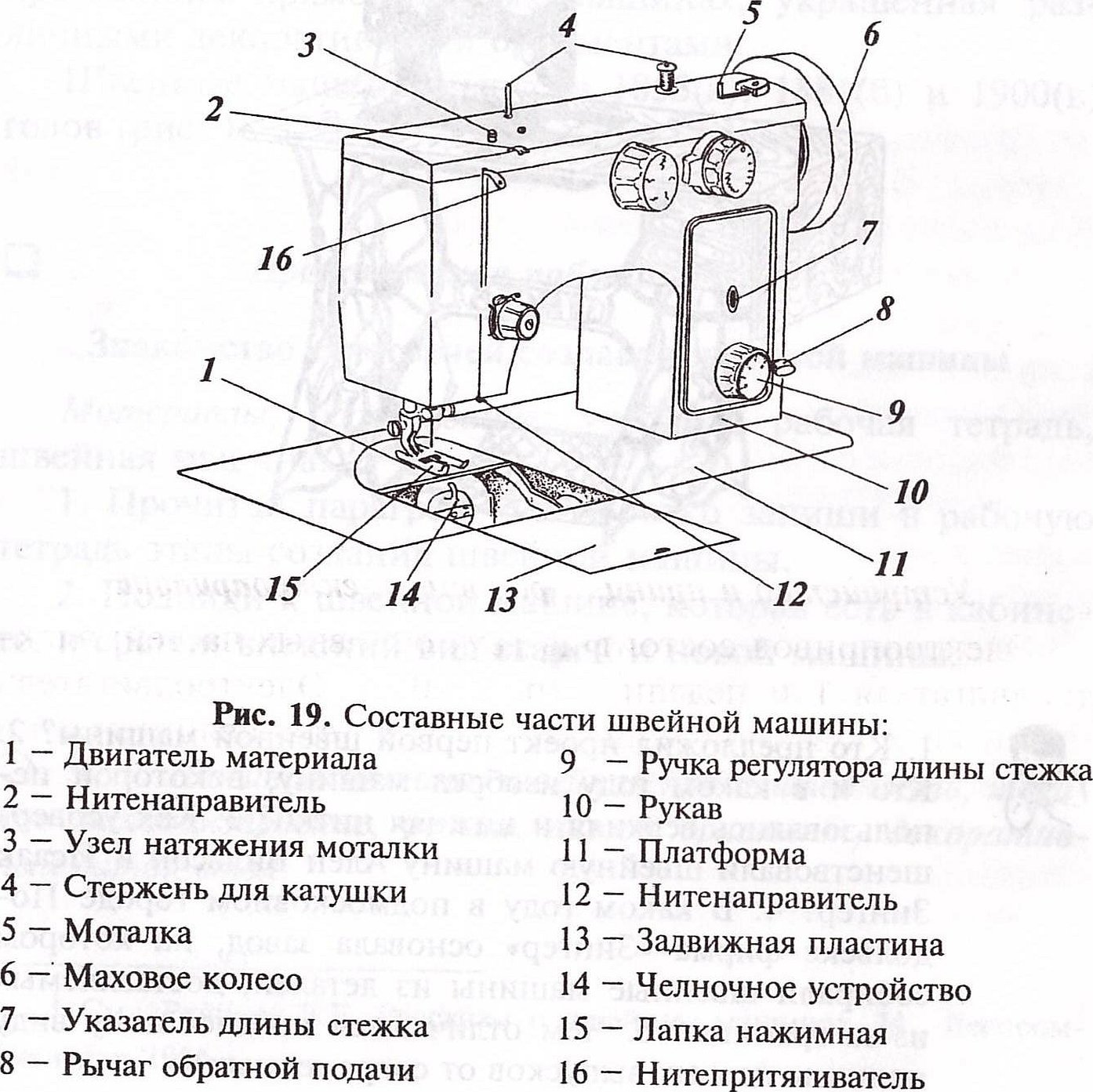
Instructions for use
Preparation for work consists of similar points for all household models. Janome lines are respected on the market. The instructions are worth considering using one of the models as an example.
How to sew with a manual machine:
- Insert the needle.
- Install the coil.
- Thread the thread.
- Select mode.
The use of modes allows you to perform dozens of types of lines and seams. This is one of the advantages of modern units. It is important to select parameters for the fabric, as well as for the desired result. Each mode has its own purpose.
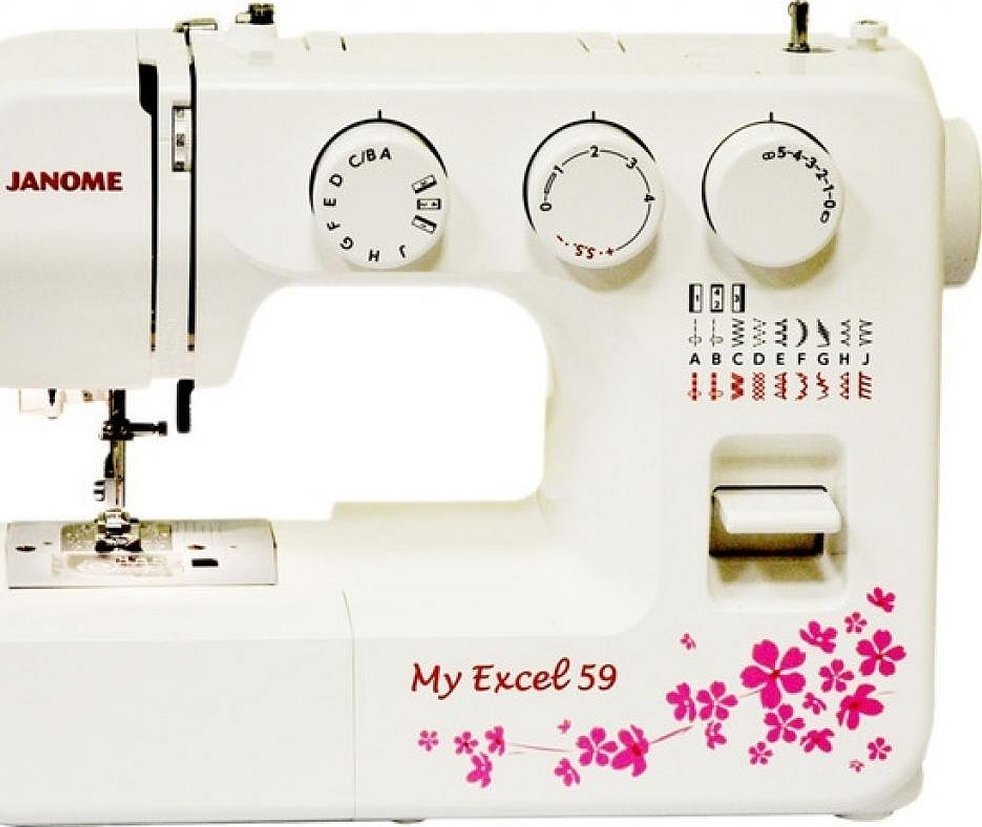
Insert the needle
Incorrect needle installation is the cause of machine breakdown, damaged fabric and wasted efforts. Therefore, it is necessary to study the theoretical part before proceeding with installation.
How to put the needle into the machine:
- Take the needle, check the position of the flat part of the flask. It should be turned away.
- Install the needle holder.
- Secure the screw with a screwdriver while holding the needle.
- Check the position of the long groove. It should be to the right of the needle bar.
Janome models perform double stitches and zigzag stitches. Installing a double needle is no different from preparing a regular needle.
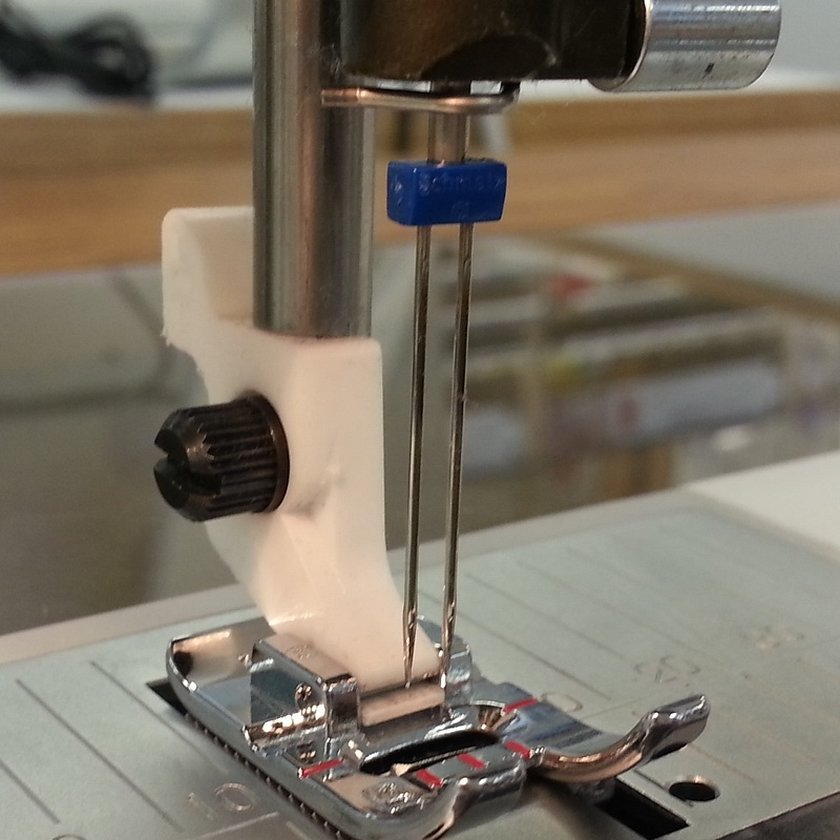
Installing the coil
The process of installing the coil is the same for most machines of this manufacturer. How to proceed:
- Place the spool of thread on the rod.
- Place the holder on and press it against the large spool.
- Use a small holder for a small spool.
- Install an additional rod.
- Put the gasket and the coil on it.
It is important to pay attention to the instructions in the manual. The manufacturer has ensured that each action is accompanied by denoting drawings.

Threading the thread
Threading in modern models is easier than in PMZ devices. It consists of several simple steps:
- Use the wheel to lift the drawbar lever up.
- Raise the presser foot.
- Pass the thread from the spool through the thread guide. Guide it along the thread guide and the first channel.
- Wrap the thread around the plate.
- Pull the thread over the lever and down into the eye.
- Pass the thread down to the left and into the needle bar guide on the left.
- Thread the needle.
In some models, you can wind the thread onto the spool by pressing the pedal.
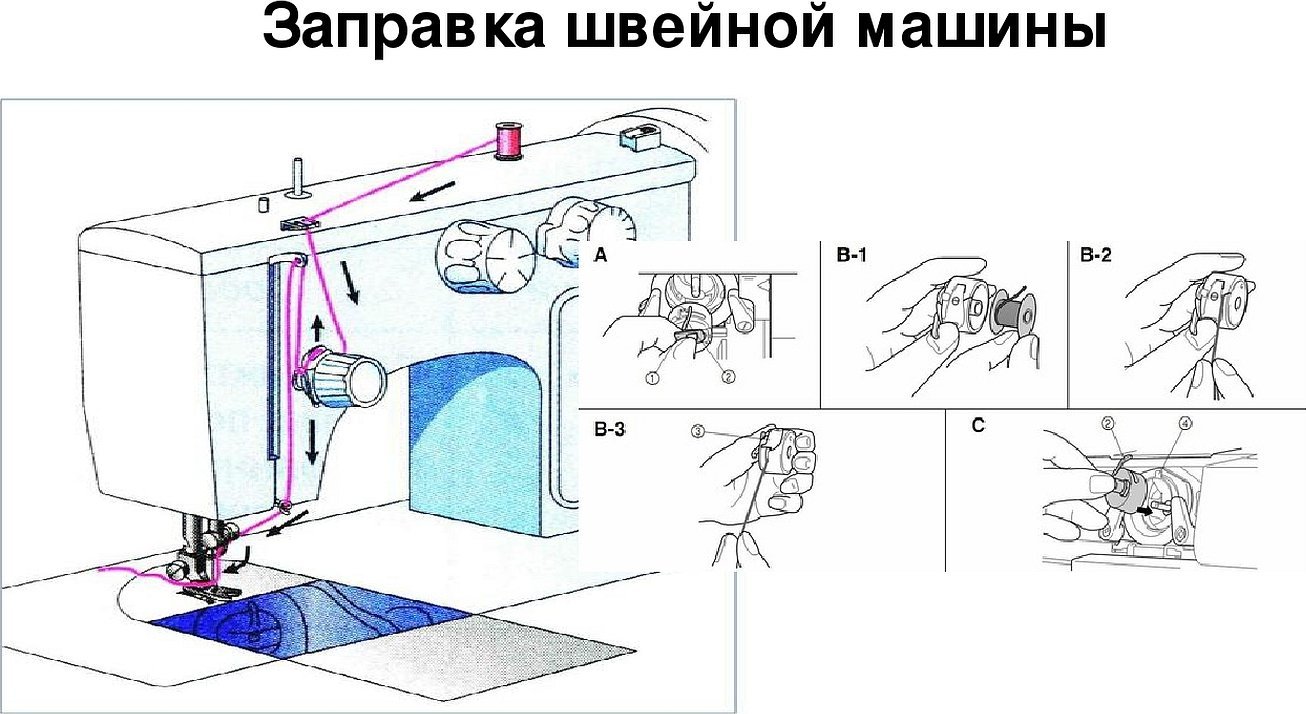
Select mode
"Podolsk" or "Chaika" are inferior to the new options in the number of functions performed. The choice of mode allows not only sewing, but also embroidery on fabric. After preparing the needle and thread for sewing, you need to select the mode.
This is the choice of zigzag width. And also the definition of the stitch length. The higher the value, the longer the stitch. There are recommendations for choosing the mode for knitwear and other fabrics. Determining the needle position also affects zigzag sewing. For straight and other lines, the instructions specify the recommended parameters: stitch number, width and length, tension and type of foot.

General rules for the operation of hand sewing machines
There are general rules applicable to new models. They allow you to save any model and sew quality items with it. How to use any manual sewing machine to extend its service life:
- Select the type of line, thread tension and other parameters depending on the fabric. You should also select the needle and thread number. Everything should correspond to the manufacturer's recommendations in the instructions.
- Periodic lubrication allows to extend the service life of the device. The mechanisms wear out less.
- It is recommended to sew only those types of fabrics that are supported by the model. Budget options cannot always sew denim or coat fabric.
- It is important to connect the device only according to the step-by-step instructions.
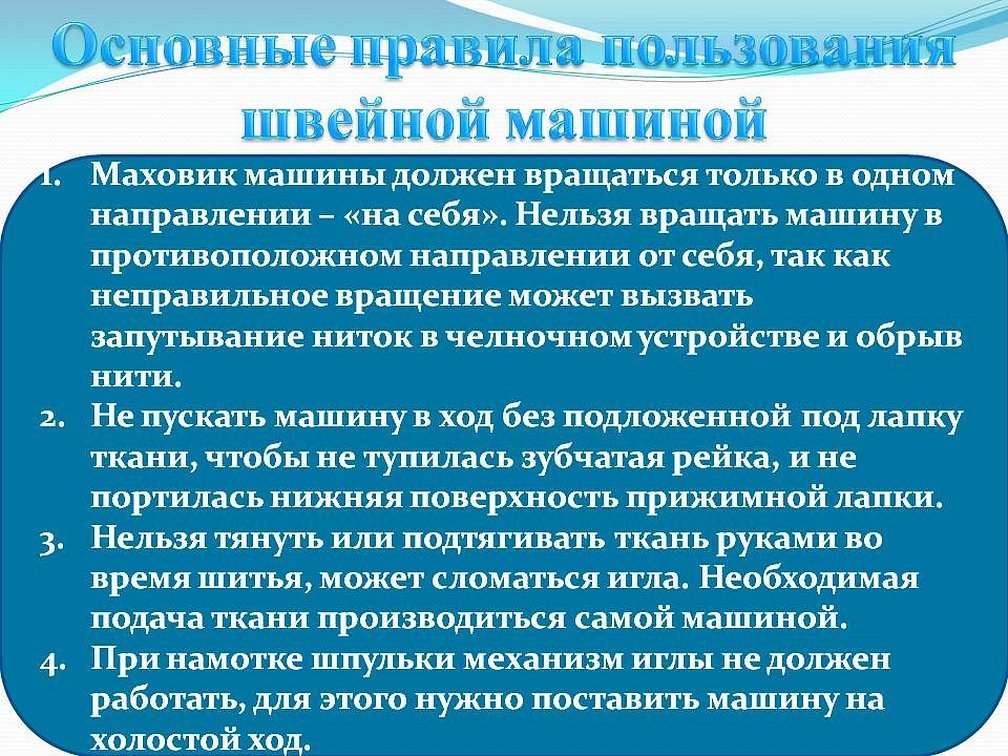
What not to do
An old Singer, Chaika or Janome can break if you don't follow the rules for working with them. So there is a list of prohibited things that you should remember:
- Do not thread a machine while it is running.
- Do not leave the car running unattended.
- Two people cannot work on the same device.
- Do not place sewing accessories near rotating parts.
Compliance with the rules will ensure the functionality of the machine, as well as the safety of the seamstress.
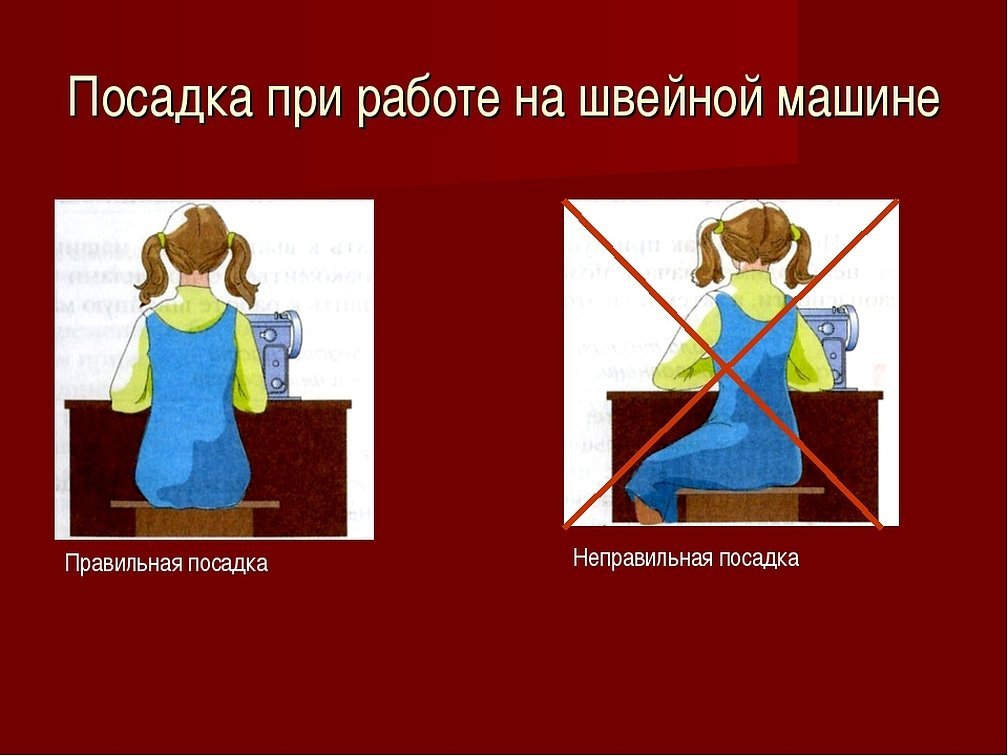
Safety precautions at work
Using the technique can be unsafe for an inexperienced seamstress who forgets about the recommendations while working.
Things to remember:
- If the machine is electric, check the grounding before starting work.
- When working, wear a headscarf and tuck your hair under it.
- Do not lean close to rotating parts of the device.
- Don't keep your fingers close to the needle.
Important! When sewing, you need to remember about posture and proper lighting.
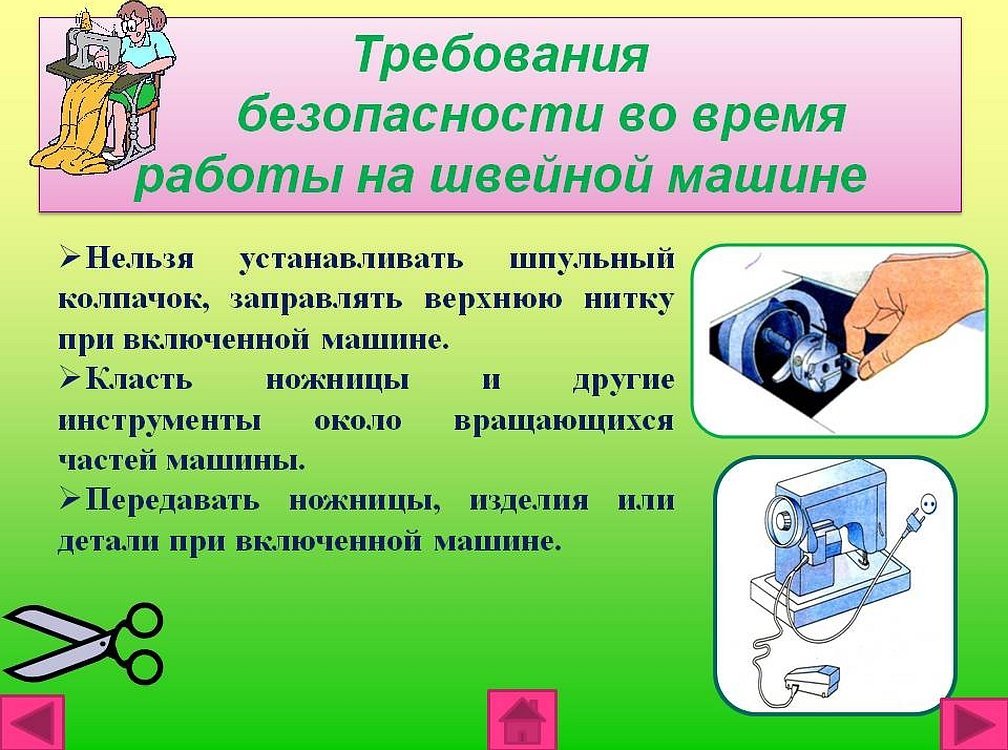
Possible malfunctions and their elimination
Machines can be used for a long time. But it is almost impossible to avoid malfunctions. There are typical breakdowns that affect all machines.
The upper thread breaks due to improper threading and poor thread quality. To fix the problem, you should look at the thread path and check its quality. You must follow the instructions strictly. The lower thread breaks due to an unsuitable bobbin. You must select spare parts only for a specific model. It is recommended to check the tension to avoid problems with stitches and lines.

Replacing the presser foot
There are many feet for Janome machines. They are designed for knitwear, leather, sewing zippers, elastic and other actions. Depending on the purpose, they need to be changed. To replace, you need to take a screwdriver, loosen the screw. And then insert the desired type of foot depending on the manufacturer's model.

Review of modern hand models
China, Japan and other Asian countries are leaders in sewing machine production. There are many manufacturers on the market:
- Brother — Japanese machines. The manufacturer produces simple household models and fully computerized machines.
- Jaguar — Japanese machines, which are created using the latest technology. Models sew almost all fabrics. There are options for home and professional craftswomen.
- Janome — the company has been in the Japanese and world markets for over 50 years. The specialists create simple but high-quality machines. The Escape line is suitable for a wide range of needs.
- Singer is a company that creates premium options, embroidery and computerized models. But there are also options for beginner needlewomen.

Modern models are operated on a similar principle. There are basic rules applicable to all sewing machines that should be followed. This helps to extend the life of the devices, as well as ensure safety during operation.




